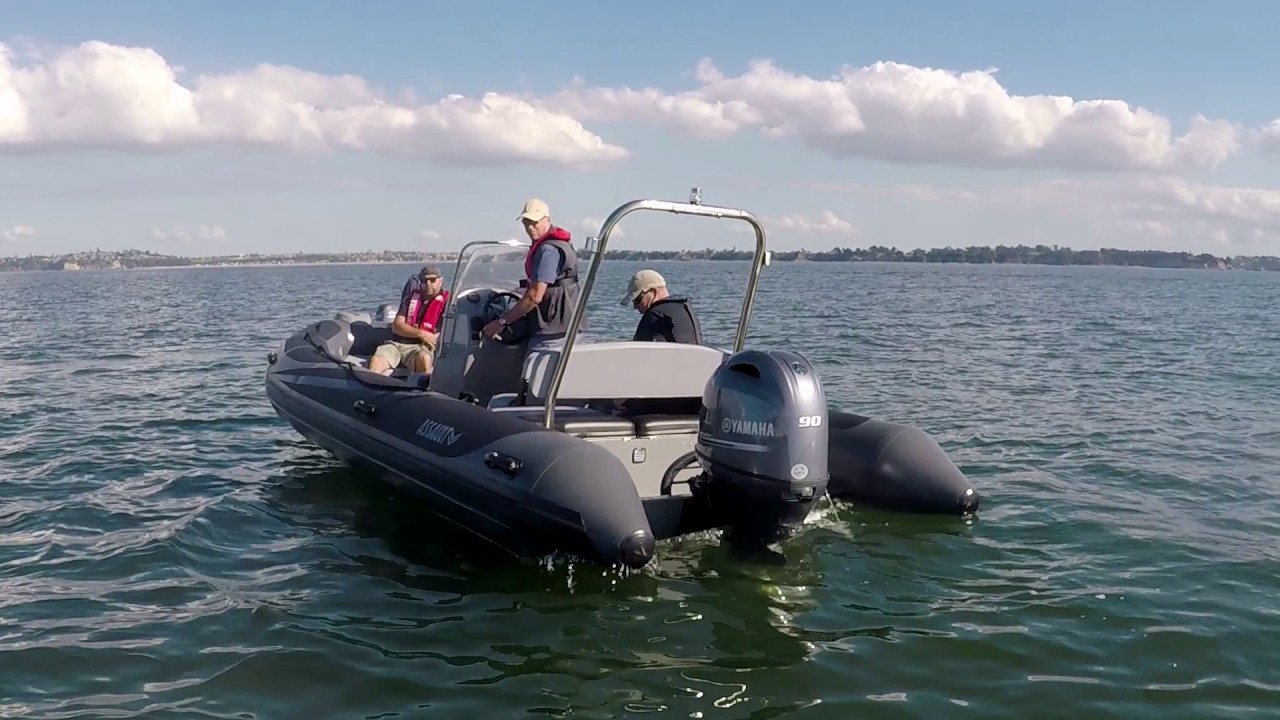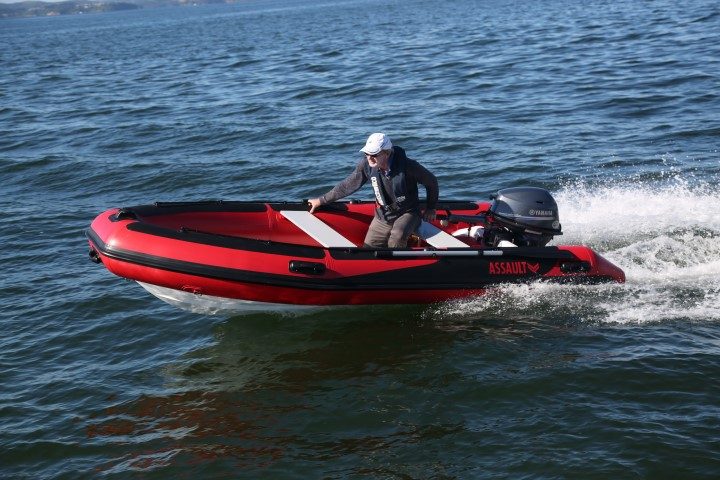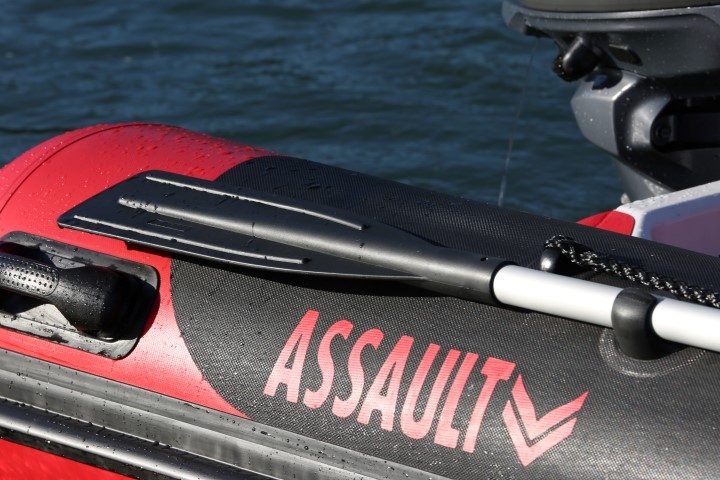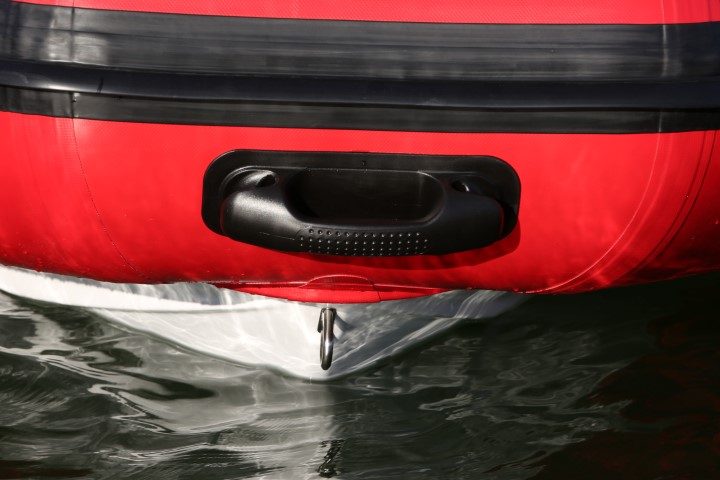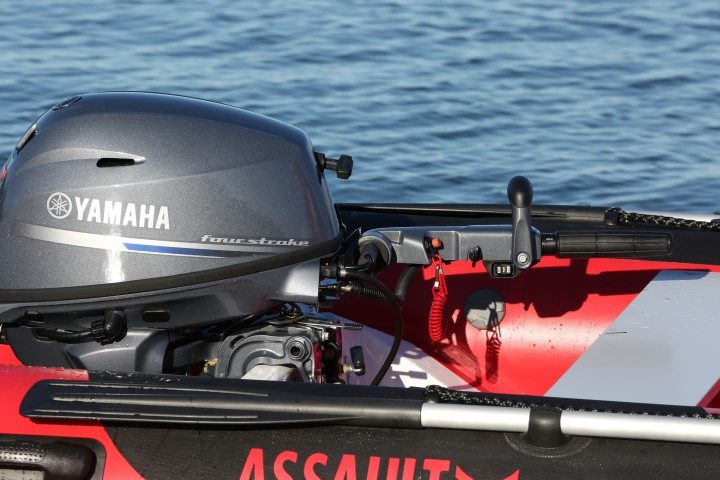‘Behemoth’ is a word which springs to mind or, perhaps more nautically, ‘leviathan’.
- Rides and handles well
- Dry ride
- Troll function is useful
- GRP hull is a quiet runner
- Too bid and heavy to manhandle aboard as a tender
- Basic boat
- Light to tow
- Good match with Yamaha F25

